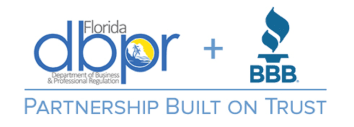
BBB Tip: Debris removal
After a storm or other natural disaster, disposal of debris can be a major concern. No matter where you live, the type of debris you will encounter will be much the same: damaged buildings, downed trees, building materials, damaged household goods, and possibly hazardous waste. What varies is the way in which each jurisdiction disposes of the debris or the rules about where debris can be stored.
Consumers should check with their local officials for information on where debris may be stored. Remember, your main goal is to regain your sense of normalcy while doing so within the guidelines set by government agencies.
BBB offers the following tips and information for debris removal
Debris is hazardous. It often has sharp or rough edges; it may contain hazardous material such as asbestos, lead or fiberglass; or it may have been contaminated with chemicals or germs. Large-scale debris can be unstable and dangerous to climb on, dismantle, or move.
When cleaning up debris, one of the first steps is to assess the types of waste you are dealing with, and what the disposal procedures should be. They fall into four main categories and can be disposed of in the following ways:
- Branches, trees and vegetative wastes can be separated from the other debris and later can be sent to the community burn pile or mulching facility. These wastes can also be sent to a permitted disposal site.
- Construction debris – the structural materials from houses and buildings, such as concrete, boards, shingles, windows, siding, pipes, etc. – can be taken to the closest construction and demolition landfill or a permitted municipal solid waste landfill.
- Other household wastes, such as trash and furniture, should be sent to a permitted municipal landfill. Some jurisdictions have debris pick-up after a storm, so check with your regular trash hauler to see if such a service will be provided for non-hazardous debris.
- Hazardous wastes – If you believe the waste contains regulated hazardous materials, more care and caution is needed. These wastes should be containerized, labeled, and ultimately sent to a facility that is permitted to store, treat, and dispose of hazardous wastes. In these instances, it is important to contact the appropriate agency to discuss proper disposal procedures.
Items requiring special disposal
The following items require special handling at all times, especially after a storm or natural disaster when the amount of waste and debris being handled increases significantly. Separate and carefully handle these items:
- Pool chemicals
- Tires
- Automobile batteries
- Bicycles
- PVC pipe
- Explosives (ammunition, reloading equipment, black powder, military ordinance, fireworks)
- Fuel containers (metal or plastic)
- Pressurized gas cylinders/tanks (propane tanks, acetylene tanks, refrigerant containers)
- Containers of petroleum-based liquids, solvents, chemicals, etc.
- Large household appliances (refrigerators, freezers, stoves, washers, dryers), especially those that contain Freon or other chlorofluorocarbons (CFCs).
- Off-road, gas-powered equipment (lawn mowers, tractors, edgers, leaf blowers and other lawn equipment, chainsaws, 4-wheelers, etc.
- Lawn and garden supplies (fertilizers, pesticides, etc.)
- Radioactive waste
- Industrial/commercial hazardous waste
- Medical waste
- Automobiles
- Electrical transformers
Disaster victims should never feel forced to make a hasty decision or to choose an unknown contractor. Check out BBB.org for BBB Accredited Businesses and BBB Business Profiles on more than 5.2 million companies across North America. For more information, contact your local BBB.

(Getty)
Still Need Assistance?
Contact Your Local BBB
Your local Better Business Bureau can assist you with finding businesses you can trust. Start With Trust®.
Additional Resources
Let BBB help you resolve problems with a business
Research and report on scams and fraud using BBB Scam Tracker
Learn more about the value of BBB Accreditation
